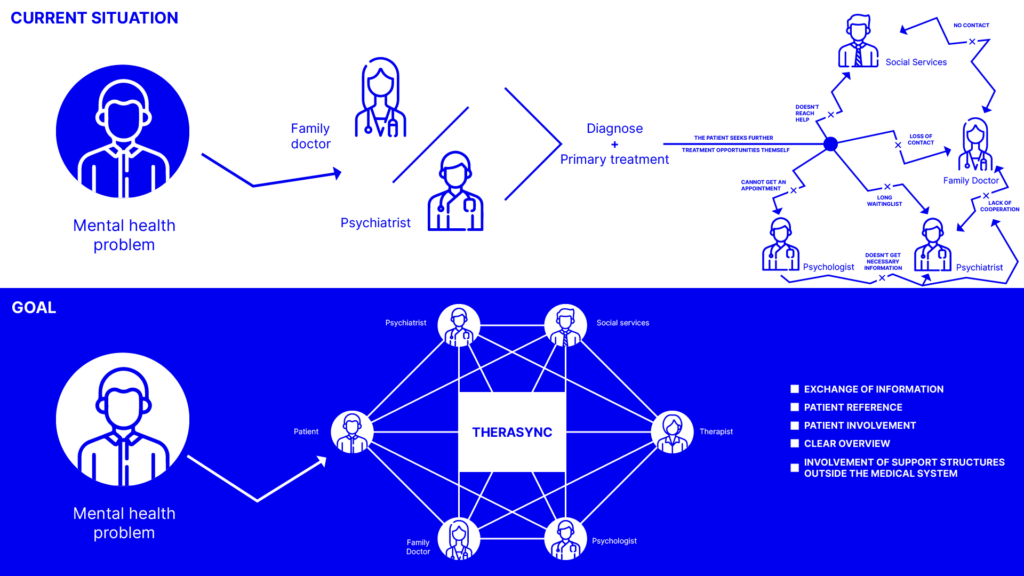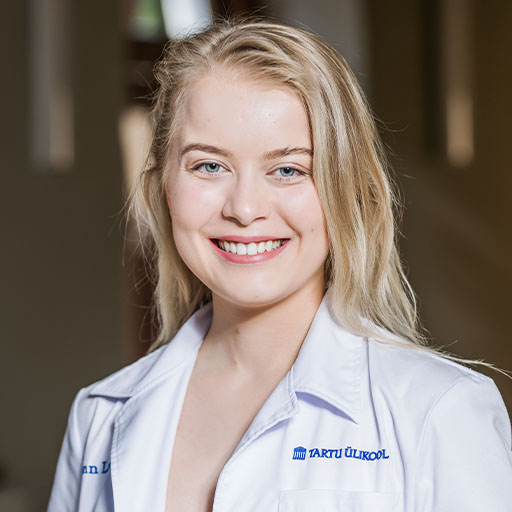Patients need continuous support
A person with mental health concerns often does not receive the necessary help in time. The queues for specialists are long, but in the meantime, no one monitors the patient’s treatment and progress. Also, the corresponding specialist may not offer the help that the patient really needs at a certain moment. The reason is lack of cooperation between the treatment team members (doctors, nurses, therapists) that is partly caused by limited access to patient information.
Thus, there is a critical need for effective and consistent treatment and support from several specialists simultaneously. At the moment, however, the availability of mental health services is not available quickly enough or uniformly across regions due to the lack of resources and labor in addition to the increasing demand.
TheraSync creates a common information space
One important way to solve the problem is to bring the treatment team into a common information space. This allows all participants, including, importantly, the patient himself, to get a clear and unified overview of the situation and needs. In this way, the patient knows which specialists are dealing with them, and they gets an overview of what kind of help they need most at the moment.
We did a pilot project in Accelerate Estonia, during which we tested the cooperation between the treatment team members and the creation of a common information space, using Pipedrive as a test platform. We created two treatment teams, with whom we played through the treatment of two imaginary patients, information sharing and different stages.
During the pilot, we played through a situation where all health data related to the patient is visible to all members of the treatment team, so that treatment decisions can be made quickly and transparently. At the national level, this means that with the consent of the patient, a third party can access the health data, in this case the TheraSync platform, which in turn shares the data with the treatment team. Although a patient’s consent is legally the highest level of consent, at the beginning of the experiment, health information systems did not allow the sharing of health data with third parties. Today however a bill is being prepared that would allow this consent based sharing.

Result and future vision
As a result of the experiment, we found that by using the platform, all members of the treatment team had a clearer overview of the patient’s progress, and it was easier to offer the latter appropriate help. It also became clear that patients want to be more involved in the treatment process.
The clinicians found that the platform does not replace mutual team meetings, but creates a suitable ground for them, because everyone has access to the information necessary for preparation.
Based on the results of the experiment, we will start by creating a minimum viable product. When it’s ready, we’ll start testing the platform with real patients and treatment teams. In a year, we hope to have completed a platform that is actively used by healthcare professionals.

Ann Leen Mahhov
EXPERIMENT LEADER


